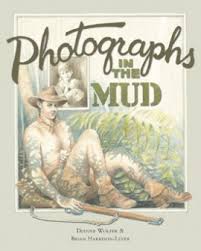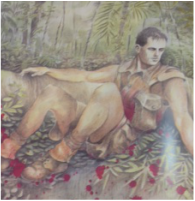Before Reading

This story is set during the Second World War in Papua New Guinea on the famous Kokoda Track. The year is 1942 and many Australians fought in Papua New Guinea to defend the advance of Japanese troops towards Australia.
How important do you think photographs were to the troops when they were fighting overseas?
What sorts of photographs would they carry?
How would photographs help a soldier's morale?
What do you use photos for?
Click the following button to learn a bit more about the Kokoda Track.
How important do you think photographs were to the troops when they were fighting overseas?
What sorts of photographs would they carry?
How would photographs help a soldier's morale?
What do you use photos for?
Click the following button to learn a bit more about the Kokoda Track.
Points to discuss after reading
- How are Hoshi and Jack similar?
- How are they different?
- Which one do you think lives? Why? The author has deliberately left the ending uncertain. Why do you think she did this? What effect does it have? What is she trying to tell us about race and war? Does it matter not knowing the truth?
- Where else have Japanese and Australian soldiers met in battle?
- Have Japanese/Australian attitudes and relationships changed since WW2? If so, how?
- Should veterans 'let go of' or forget the past? Why/Why not?
- Do you know anyone who has been to war?
- What is the message in this story about the lives of soldiers that go to war? Is any one life more important than another?
- How would you have reacted if you were Jack watching Hoshi looking at the photograph of Hana?
- How do the illustrations draw out and add to the story of Photographs in the Mud?
- Do you have a favourite page?
- How does the inscription on the final page make you feel?
- What are some of the ways we can avoid war as a community?
- What can you do personally?
ILLUSTRATIONS
|
The illustrations in last week's story of Lone Pine were very effective in making us feel the darkness and the sorrow of war.
Describe the type of illustrations that are in Photographs in the mud. What is the effect of 'photograph' like pictures throughout the text? What colours are used by the illustrator? Do they remind you of the camouflage colours used in war? The same colours are used for both soldiers. Why do you think they are depicted as being the same? What is the effect of the use of red on top of the usual colours throughout the book on the page to the left? |

